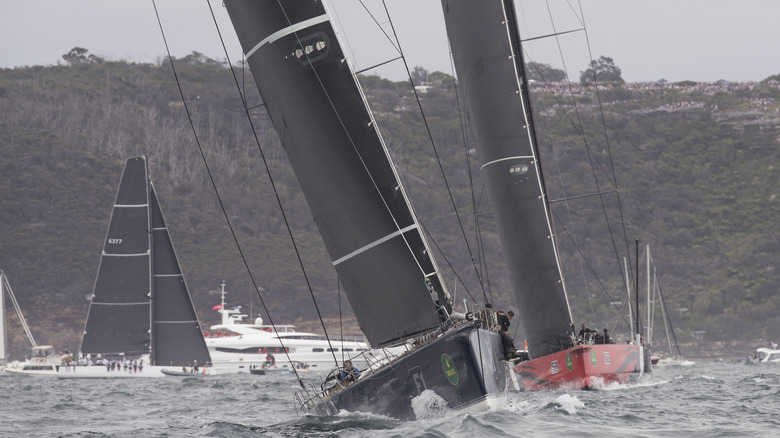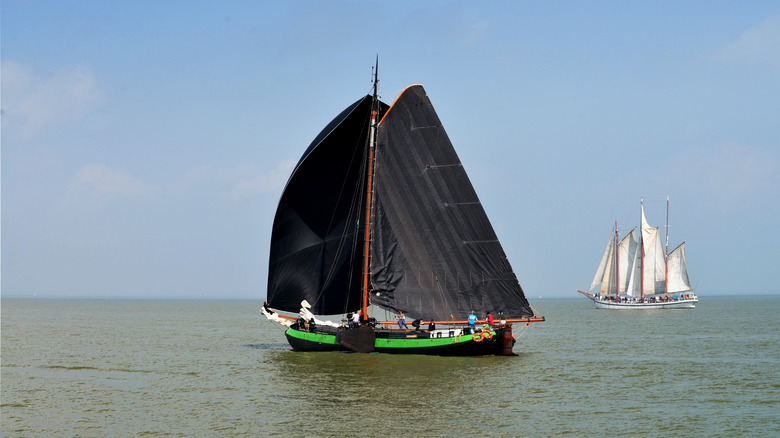Why Do Yachts Have Black Sails?
Despite the widespread association with pirates and black sails in popular culture — see the Starz TV series "Black Sails" that ran between 2014 and 2017 – pirates didn't actually cruise around the high seas sporting black sails to catch the wind. They flew the Jolly Roger, an ebony flag with a white skull and crossbones drawn across it, but dark-hued sails? Not so much. But the swarthy color does have utilitarian uses on modern sailing vessels that are anything but sinister, even if most modern ships no longer use sails at all.
Larger sailing vessels are equipped with several different sails. The mainsail, found behind the mast, is attached to the boom. The smaller headsail (or jib) accompanies the mainsail and overlaps the mast at the boat's bow. A genoa is larger than the headsail and is attached to the front of the forestay (the thing that keeps the mast from falling backward). Meanwhile, the spinnaker stretches out past the boat's bow. Finally, you have a gennaker, which combines a genoa and a spinnaker.
Black sails are advantageous for sailing vessels, with the practical reasons boiling down to one thing: science. But there's also a simpler reason — aesthetics. Simply put, they look darn cool. As one writer for Sailing Magazine put it, the black triangles cutting across the water's surface look "like giant shark fins." What's more, sailing fashion changes as often as clothing trends, and the same writer likened not having black sails to wearing a polyester leisure suit — not a good look.
Black sails have performance advantages, too
Black sails are most often constructed out of carbon fiber, a naturally black, high-strength, and lightweight composite substance that is currently the strongest load-carrying material available for sailmaking. This means they will last much longer than other sails made from more traditional sailcloth fabrics and synthetic fibers like Dacron and Kevlar.
Black sails also interact differently with sunlight. White-colored sails are known to reflect a broad spectrum of the sun and, in turn, minimize heat absorption, all of which theoretically helps keep the sail's shape and tension strength intact. While that may have once been true with older fabrics, the benefits of expensive high-tech composites like carbon fiber have all but negated that supposed advantage. Some also believe that darker sails offer improved aerodynamics thanks to smoother airflow along their surface, but that's more theoretical than a proven fact.
Black, however, does indeed absorb more sunlight, which creates another scientific advantage in the form of thermal lift. In short, black sails do make a boat faster. Under certain conditions, especially with a cold water surface and direct sunshine, black sails will absorb sunlight to create hot air that then flows up along the sail. The pressure gradient adds lift and, thus, more speed to the boat. In some cases, completely opaque black sails can create a thermal boost that adds as much as 2.3 knots (2.65 mph) to a boat's speed.

